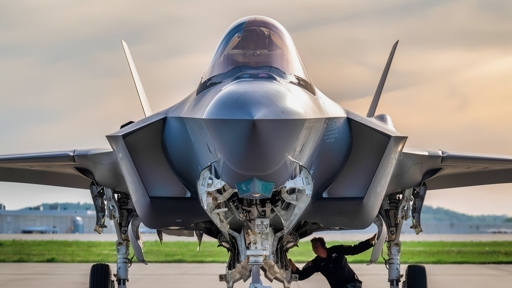-
European nations and Canada are “pushing away” from the F-35, motivated by a desire for “strategic autonomy” and political friction with the Trump administration
-
Spain officially canceled its F-35 purchase in August 2025, opting for European-built alternatives. Switzerland is now also reviewing its 36-jet deal after being hit with a “shocking” $1.3 billion price hike and new 39% U.S. tariffs, and recent reports suggest that Portugal has not opted to purchase the U.S. jets
-
Instead of the F-35, they are increasingly looking to European alternatives, such as the Eurofighter Typhoon and the Future Combat Air System (FCAS).
-
Canada’s 88-jet deal is also in “limbo,” as PM Mark Carney, angered by Trump’s “51st state” comments and trade disputes, ordered a review of the 72 un-committed jets
-
Technological and industrial sovereignty are significant reasons why some countries are opting not to purchase the F-35. Some European nations prioritize developing their own defense industries and technological bases. Buying American-made F-35s would make them dependent on US supply chains and could suppress the development of their own next-generation aircraft programs. …



There’s nothing similar stealth-wise, either, at least for that kind of aircraft.
It’s a really really good plane, like you’d expect from however many trillions spent in project money. It’s just that the Americans control the software running on it.
It’s a huge problem. There is no other fifth gen option available to NATO. The Gripen is one of the best choices out there, and it does have a lot of stealth and EWAR capabilities that other fighters lack, as well as really impressive radar, but that’s not the same thing as the kind of stealth that the F-35 and F-22 have.
On the other hand, I can absolutely see how the F-35 now presents an unacceptable security risk.
The good news is that Russia has nothing even close to the F-35, and its honestly unlikely that most of their stuff can even stand up to the Gripen. Their purported fifth gen fighter just isn’t. It has a radar cross section over a thousand times larger than that of any US fifth gen, that’s according to Russia’s bullshit propaganda numbers. And they’ve only made about 6 of those. The rest of their fleet is slightly upgraded cold war surplus, maybe at the level of the F-16 if you’re being really generous, and the Gripen wipes the floor with the F-16 in combat testing (Gripen pilots shoot down F-16s at a ten to one ratio IIRC).
If we assume that Russia is the main threat, then the Gripen will serve very well for now (at least for Canada, with no need for a carrier launch capability) until we can get a sixth gen fighter; Europe has two such projects in the works. If we assume the main threat is the US, then the F-35 would still be a bad idea, since even putting aside any issues with supply of firmware, they would know its capabilities and weaknesses intimately. China is the wildcard and we just don’t know what the capabilities of their craft are. OTOH its extremely unlikely that there would be a conflict with China that didn’t involve the US as the primary combatant, so I think that’s less of a concern for the rest of NATO.
I’m nitpicking a bit, but like you mentioned, China and Russia have limitations. I don’t really buy that the J-20 is on the same level, and the Russian thing is an actual joke. So, “to anyone”.
EWAR sure, but it’s totally unstealthy AFAIK. Survivability would depend on hitting something, landing in a field and getting back onto a truck before a counterattack can arrive. Which works for SAM units and artillery, I guess.
Which, maybe we should just invest in SAM units and sensors, honestly, if we’re worried about a hostile US. I’m guessing it’s a lot more cost effective, and would be nearly as effective early in a defencive conflict. The other medium-term option would be a jailbroken F-35 of some kind, but that’s only possible once the alliance is well and truly dead. All the physical parts are available from somewhere else.
I would be surprised if China doesn’t have an F-35 equivalent at this point, though realistically I think they’re betting on their ability to backdoor and take down adversary electronics as being part of that ‘stealth’ solution.
Well, we know that they do, but we don’t know very much about its real capabilities.
However I don’t think there’s any realistic way to backdoor a fighter jet in flight. That’s one of the myths that was being pushed by people like Burton and Sprey because they were opposed to any kind of advanced technology in a fighter plane. We’re talking about people who literally thought that planes shouldn’t have radar.
In reality, these things aren’t flying around hopping WiFi. Every single electron of communication into and out of a stealth fighter is more tightly controlled than gold bars in Fort Knox. There’s basically no more tightly controlled communications and electronics platform in the world than an airborne F-35.